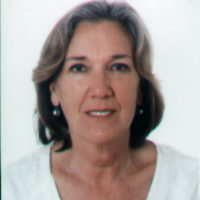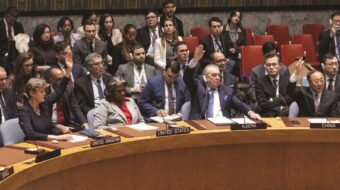UXO stands for Unexploded Ordinance – bombs dropped from the air or land mines placed in the earth – that remain dormant, often for decades, until touched off by contact or by heat to do their deadly work long after war’s end. Such was the fate of Ho Nguyen, a 40-year-old farmer in Viet Nam’s Quang Tri Province on February 12th, just two days before Tet, the joyous Asian Lunar New Year celebration. He was killed while weeding the banana trees in his field by a UXO cluster bomb, dropped by our military perhaps before he was born. There are estimates that 30% of cluster bombs do not explode on initial impact. Mr. Nguyen leaves behind a wife and six young daughters.
Just three weeks before, in the same province of Quang Tri, 550 middle school children narrowly escaped death and injury when a buried 105 mm missile exploded in their school play yard, shattering windows and hurling shrapnel. (An over-sized tree had been felled and the remaining stump was being burned – detonating the hidden UXO.) This happened on Wednesday, January 27th, the day Howard Zinn died. Perhaps The Great Humanitarian’s departing spirit intervened to spare the 13 to 15-year-olds, who would have been out on the playground a mere 5 minutes later for recess.
The first sentence of the Boston Globe’s obituary for Zinn reads, “Howard Zinn, the Boston University historian and political activist who was an early opponent of US involvement in Vietnam…….died today. He was 87.” Zinn knew that more explosive power than World War I and II combined – including Hiroshima and Nagasaki – was dropped on South East Asia in the form of conventional bombs…..450 Hiroshimas on Viet Nam alone, to say nothing of Laos and Cambodia.
On February 7th, just five days before the farmer’s death, a Sunday afternoon explosion of old wartime ordnance seriously wounded four Van Kieu men, all in their 20s, while they were weeding a coffee plantation near the former U.S. Marine Combat Base of Khe Sanh – again in Western Quang Tri. The accident occurred in Tram Village, where the Van Kieu and Paco ethnic minorities make up most of the local population.
All three recent incidents happened in Quang Tri, the northern most province of southern Viet Nam – hard up against the DMZ (Demilitarized Zone, or 17th parallel – the Western Power’s arbitrary division of North from South in the mid-1950s). Quang Tri remains the most heavily bombed area of the country, accounting for 7,000 (1.2% of the population) of the more than 105,000 Viet Namese children and adults killed or injured since the war’s “end” in 1975. Fully one third of those casualties are victims of cluster munitions.
Ho Nguyen died in the Western part of Quang Tri, just 5 kilometers southwest from the infamous “Rockpile” – a huge, natural out cropping of stone used by our Army and Marines as an observation post and artillery base from 1966 to 1968. “The big guns were there, too: 175 Long Toms, 8-inchers on tracks and of course a bevy of 105s and 155s,” reads the webpage on the Rockpile. It was perhaps one of those 105 mm shells that landed over 40 years ago near Dong Ha City in the Eastern part of Quang Tri, the present-day location of the middle school. Back then the Department of Defense estimated that such missiles had a 10% failure rate (this rate has been lowered since then).
Mr. Nguyen’s uncle heard the explosion and was the first to rush to the accident scene. When he arrived, he saw his nephew lying lifeless on the ground. Both his hands were severed, his eyes were badly damaged, his skin scorched from the chest up to his face. His wife and six daughters, the youngest only three years old, are facing shock and grief, and an uncertain future. The family’s emotional tragedy is compounded by the loss of their only breadwinner, who also supported his aging parents. “I married twice but have only that son,” lamented Nguyen’s father, Mr. Ho Van Mong, who was a guerrilla fighter during the war. “How can I live on without him?”
It is too late for Mr. Nguyen and his family, but Project Renew is pressing forward in an heroic effort to clean up Quang Tri Province. Founded in 2001 and directed by an American veteran, Chuck Searcy, Project Renew is supported by the Vietnam Veterans Memorial Fund (the group that built The Wall in Washington, D.C.) and individual donations. The Project has removed thousands of UXOs – you can see their exemplary work at: www.landmines.org.vn Much remains to be done, and donations are very much needed and can be made in the following ways:
(1) If, for tax purposes, donations need to passed along to a 501(c)(3) under the I.R.S. code, the funds can go through VVMF (the Vietnam Veterans’ Memorial Fund). For more information, check out this link: https://www.vvmf.org/index.cfm?SectionID=36.
(2) Send a check (US$) directly to:
Project RENEW Coordination Office
Attn: Ngo Xuan Hien – Public Relations and Development Officer
103 Nguyen Binh Khiem St.
Dong Ha, Quang Tri Province, Viet Nam
(3) Bank transfer
Bank Name: ANZ
Account Name: RENEW Donor
Account No: 4370488
Currency: VND
Swift Code: ANZBVNVX
Bank Address: ANZ Bank, Hanoi Branch, 14 Le Thai To St.
Hoan Kiem District, Hanoi, Viet Nam












Comments